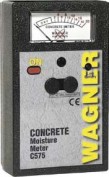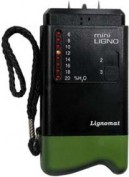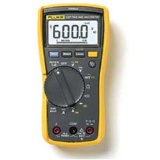Search This Site
Search With Google
The Reasons Gaps Open Up Between Floorboards
In a word, moisture. Despite the fact that the wood on the floor is dead, it will still continue to absorb and release moisture. When absorbing moisture the boards will expand, when releasing moisture they will contract. It is the contracting that causes the gaps.
As humidty changes in an environment, so does the moisture content in the air. This is the reason for gaps between floorboards appearing when weather takes a turn and goes cold.
During winter heating systems are turned up to warm the home and this pulls moisture out of the floorboards making them contract and creating the gaps. In summer the opposite happens. Air conditioners come in to play and moisture is forced in to the air. The result here is that floorboards will expand and any gaps will disappear.
Acclimation
Floorboards need to be acclimatized before being layed. They are exposed to the environment for a couple of weeks to achieve an equilibrium state of moisture with their surroundings. Check out Acclimation for further assistance and advice on this.
Prevent Gaps In Floorboards
When the floorboards have been layed, small gaps will appear. One has to expect this as there is no way to prevent the wood from absorbing and releasing moisture.
Reducing and controlling the affect can be achieved by using a portable air humidifier in the room and regularly testing the floorboards with a moisture meter for moisture content.
Fixing Gaps
One way, and perhaps the most common approach, is to fill the gaps between the floorboards with a filler material. Yes this can work but the issue with this is that a constant level of humidity is required all year round.
If not this solution is inadequate and actually proves to be a very poor answer. Without constant humidity the floorboards will expand at some stage and push the filler out.
Now correcting gaps between floorboards is a very tough thing to achieve. One should expect small gaps and just take precautions when laying a new floor to prevent larger gaps from appearing.
Prevent And Repair Gaps In Wooden Floorboards
On This Site



Sponsored Links
Wooden floorboards have a habit of creating various problems in the home if proper care is not taken with them. The issues can develop pre installing or when actually in situ. Floorboards can buckle, cup and crown. All of which can ruin the appearance and functionality of the floor.
Creaking floorboards can be one of the most annoying things to happen in the home and rank on par with a leaking tap.
Though of course if you do have young ones who have a habit of opening your biscuit tins in the middle of the night, a creaking floorboard can of course be of some use!
The most common issue and problem with a wooden floor is that of gapping. These are small spaces that open up between floorboards.
Moisture Meter Guide 2010 Contact details:garnett65@hotmail.com


The complete moisture meter website
Moisture Meter Guide

| Tramex Moisture Encounter Plus |
| Tramex Compact Wood Moisture Meter |
| Tramex Concrete Encounter Moisture Meter |
| Tramex Skipper Plus Moisture Meter |
| Tramex Roof And Wall Moisture Scanner |
| Sonin Digital Moisture Meter model 50218 |
| Sonin Digital Moisture Meter 270 model 50270 |
| Sonin Moisture Test Tool model 50210 |
| Sonin Moisture Test Meter Model 50211 |
| Oak |
| Douglas Fir |
| Beech Tree |
| Elm Tree |
| Hickory Tree |
| Maple Tree |
| Pine Tree |
| Prevent And Repair Gaps In Wooden Floorboards |
| How To Fix A Squeaky Hardwood Floor |
| How To Repair A Hardwood Floor That Has Buckled |
| Which Is The Best Firewood? |
| Concrete |
| Concrete Moisture |
| Screed Moisture Meter |
| SDS Drill |
| Belle Cement Mixer |
| SDS Drill Advice |
| Which SDS Drill |
| SDS Drill Accessories |
| Drilling Into Concrete |
| Kennedy Tool Box |
| Moisture - Basic Facts |
| Types Of Damp |
| Wet Rot |
| Dry Rot |
| Mold |
| Water Leak Detection |
| Stucco Moisture |
| Water Damage |
| Moisture And Rust |
| Moisture Damage To A Chimney |
| Wallpaper Stripper |
| Plaster Mixer |
| Why Worry About Moisture Problems |
| Does Your Home Have A Moisture Problem? |
| How To Solve Moisture Problems |
| How To Use Anti Mold Paint |
| Rising Damp |
| Condensation |
| Salt Damp |
| How To Avoid Bathroom Condensation |
| How To Remove Black Mold |
| How To Prevent Bathroom Mold |
| Soldering Kit |
| Soldering Kit Contents |
| Soldering Kit Advice |
| Bonsai Tree Classification |
| Growing Bonsai From Seed |
| Bonsai Tree Care |
| Bonsai Tree Training |
| Bonsai Tools |
| Displaying Bonsai |
| Bonsai Calendar |
| Bonsai Plants |
| The Thirsty Light Curve Moisture Meter |
| The Thirsty Light Ladybird Moisture Meter |
| The Thirsty Light Bumble Bee Moisture Meter |
| The Thirsty Light Butterfly Moisture Meter |
| Hanna Instruments |
| Agratronix Portable Coffee Moisture Tester |
| Lawn Aerator |
| Lawn Roller |
| Lawn Rake |
| Lawn Sand |
| Chainshot |
| Chainsaw Gloves |
| Chainsaw Trousers |
| Chainsaw Boots |
| Mac 4 - 20 XT Chainsaw |
| Mac 738 Chainsaw |
| Mac 842 Chainsaw |
| Mac 20X Power Chainsaw |
| Einhell BG-PC 3735 Chainsaw |
| Einhell BG-PC 4040 Chainsaw |
| Einhell BG-PC 5045 Chainsaw |
| Poulan P3314 Chainsaw |
| Poulan P4018 Chainsaw |
| Poulan Pro PP3816AV Chainsaw |
| Poulan Pro PP4218AVX Chainsaw |
| Poulan Pro PP4620AVX Chainsaw |
| Efco MT 4100 SP Chainsaw |
| Efco MT 3500 Chainsaw |
| Efco 132 S Chainsaw |
| Efco 147 Chainsaw |
| Efco 152 Chainsaw |
| Efco MT 7200 Chainsaw |
| Efco MT 8200 Chainsaw |
| Efco MT 3750 Chainsaw |
| Methods Of Obtaining Soil Moisture Levels |
| Hygrometer |
| Psychrometer |
| Rain Gauge |
| Wave Ventilation System |
| Humidity |
| Hygrometer For Keeping Reptiles |
| Humidor |
| Weather Stations |
| Musical Instrument Storage |